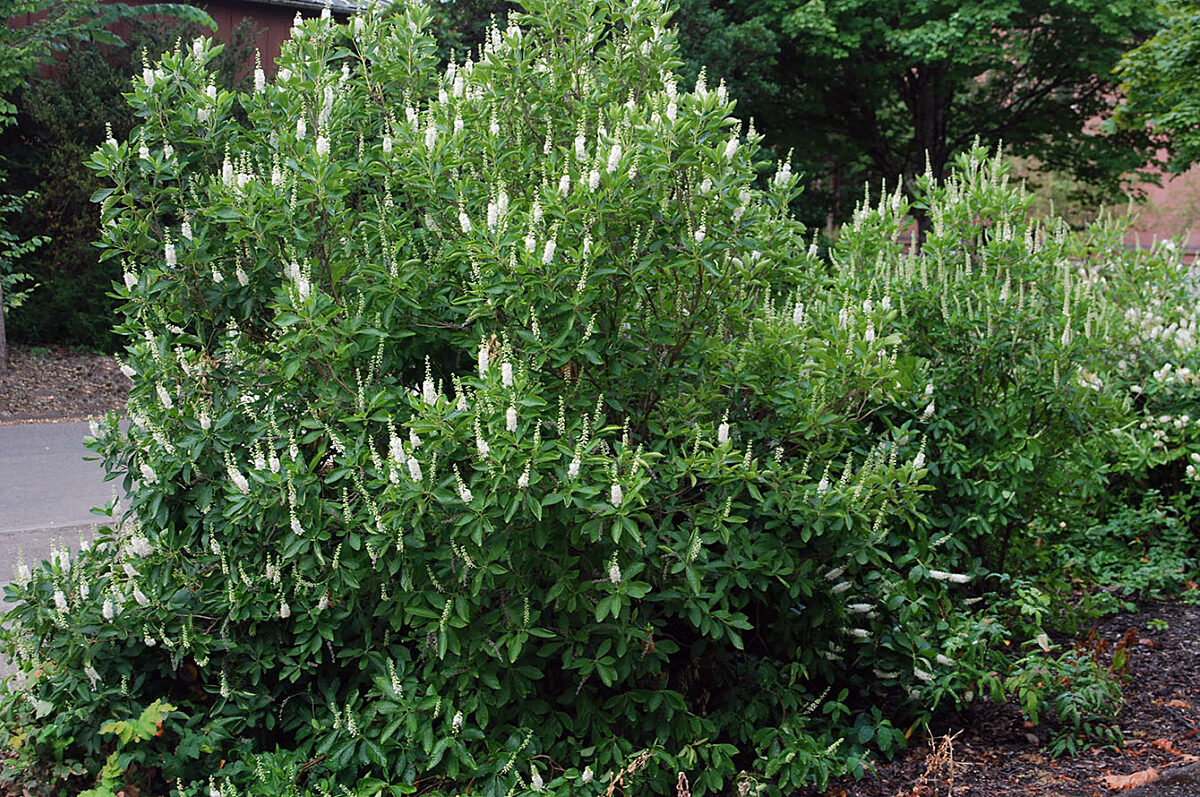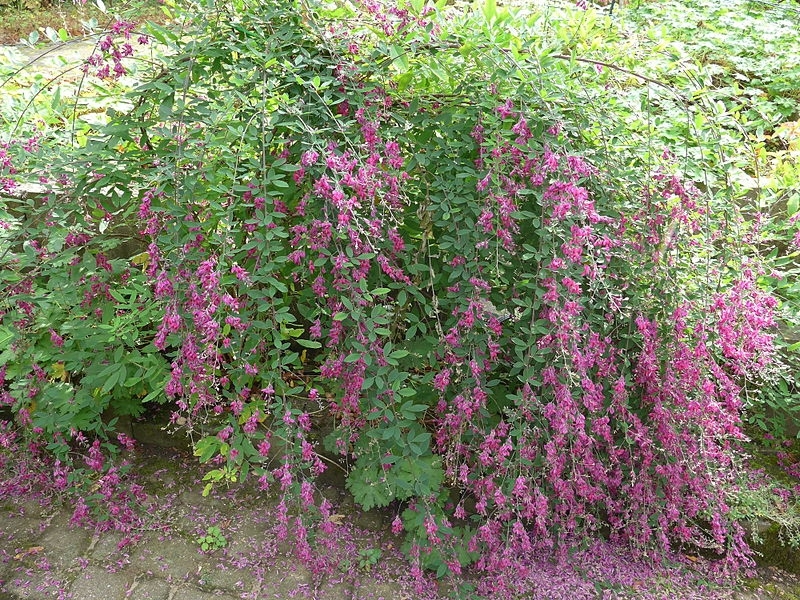After the success of the “Small Shrubs for Small Spaces” category at the Spring Plant Sale, we will continue the theme at the fall sale – and bringing your attention to plants notable for fall color:
Itea virginica ‘Little Henry’ remains 3’ feet tall by 3 feet wide in maturity, and forms a full, rounded mound. Itea is known for its long, white, finger-like flowers in late spring to early summer. The flowers are slightly fragrant, suggesting the common name “Virginia sweetspire.”
Sadly, gardeners often forget to include the shrub on their list of important plants for fall. The leaves turn a deep, but soft, burgundy which is the perfect companion for an adjacent planting of a fall-blooming perennial with white or pink flowers, or a shrub with chartreuse leaves.

Clethra alnifolia is another shrub primarily purchased for its flowers. In summer, they poke out in abundance all over the plant, attracting pollinators and humans with their heavy perfume. The scent is so strong that you can often locate the plant in the garden by following your nose. Once the flowers fade, however, don’t forget about Clethra’s usefulness in the fall garden. The leaves turn a bright yellow, providing a beautiful complement to purple-flowering perennials like asters. An added benefit is Clethra’s ability to survive in wet sites, so it works well in areas that get temporarily soggy in the spring or after a heavy rainfall. Clethra cultivars range in size from 2’ to 8’ tall.
Our “Featured Perennial” category will focus on plants that provide food sources for pollinators and birds that need to “stock up” before they migrate or prepare for over-wintering.
It is important to provide pollen and nectar in the garden as late in the season as possible, which is easy to do with asters. Symphyotrichum novae-angliae (New England aster) is native to the eastern United States, prefers full sun, and grows readily in gardens or along the sides of roads and fields.

The aster cultivar ‘Alma Potschke’ matures at 2.5 – 4’ tall by 2.5 – 4’ wide. It is a favorite among gardeners because its profuse hot-pink flowers provide a bright spot of color in the fall landscape, and because it is often covered with butterflies. Once, when installing some plants already in full bloom, co-workers and I carried several plants from a holding area to the installation site. As we walked to the planting area, butterflies hovered around us while they tried to settle on the open blooms.

Another plant that creates a “buzz” among gardeners is Lespedeza thunbergii (bush clover). It is a semi-woody shrub that dies back to the ground at the end of each year, but then re-grows to its full size during the following year. In the spring, delicate new stems emerge from the ground, and take all summer to develop into a large shrub with a graceful, weeping habit. Lespedeza can get 6 – 7’ tall by 8’ wide, so it needs space in the garden to allow for its mature size. It seems like the stems are in bud forever, teasing us with the possibility of flowers, but not delivering until early September. When it finally does bloom, the reward for waiting is spectacular. Small, pink, pea-shaped flowers cover the branches, weighing them down until the tips touch the ground.
Most experienced gardeners will tell you that fall is an excellent time for planting perennials and woody plants. Landis’ Fall Plant Sale is open to the public on Saturday and Sunday, September 7 and 8, from 10 AM to 4 PM. The members-only “Pick of the Pots” preview party will be held on Friday evening, September 6, from 4 – 6 PM.
